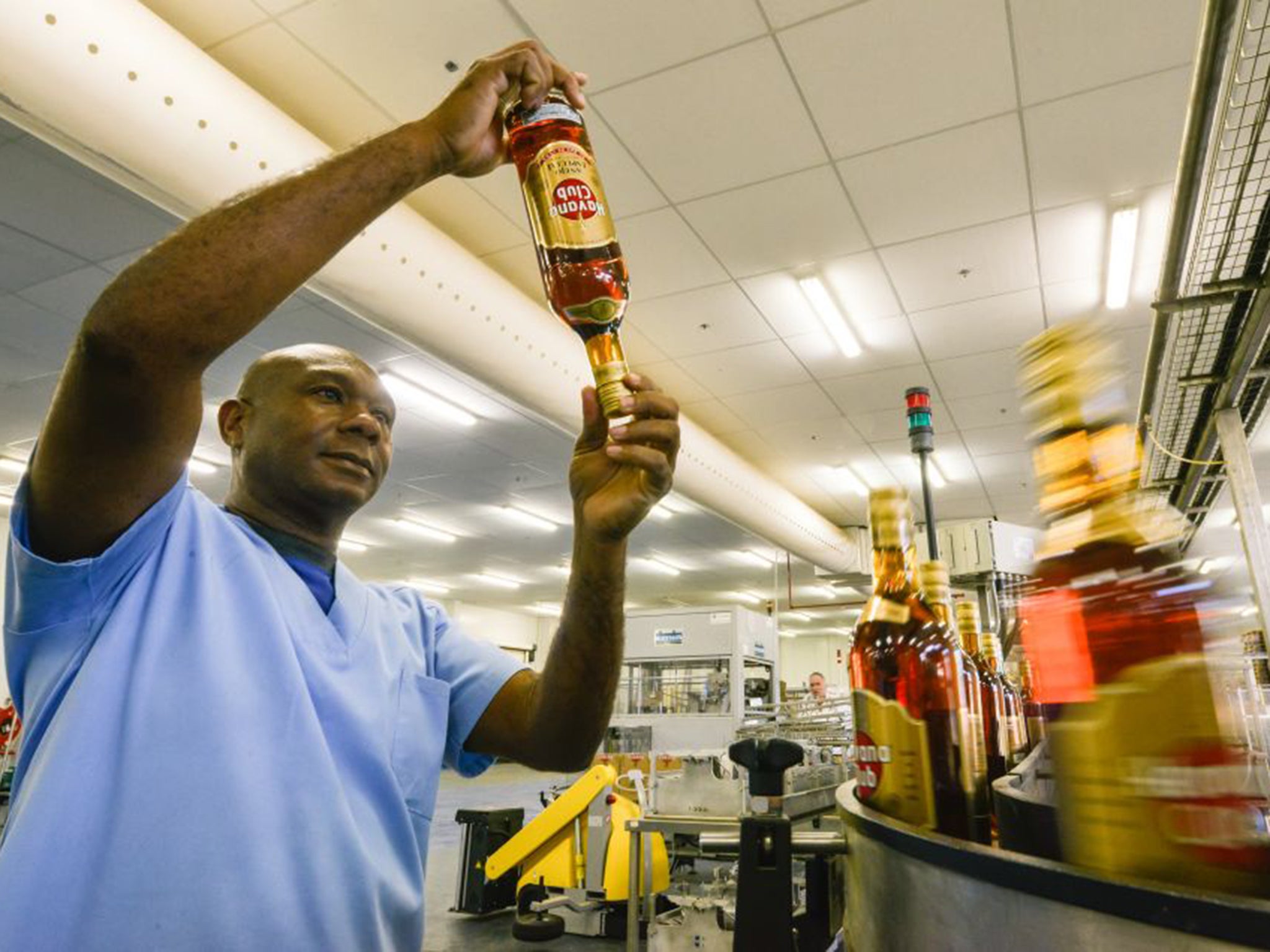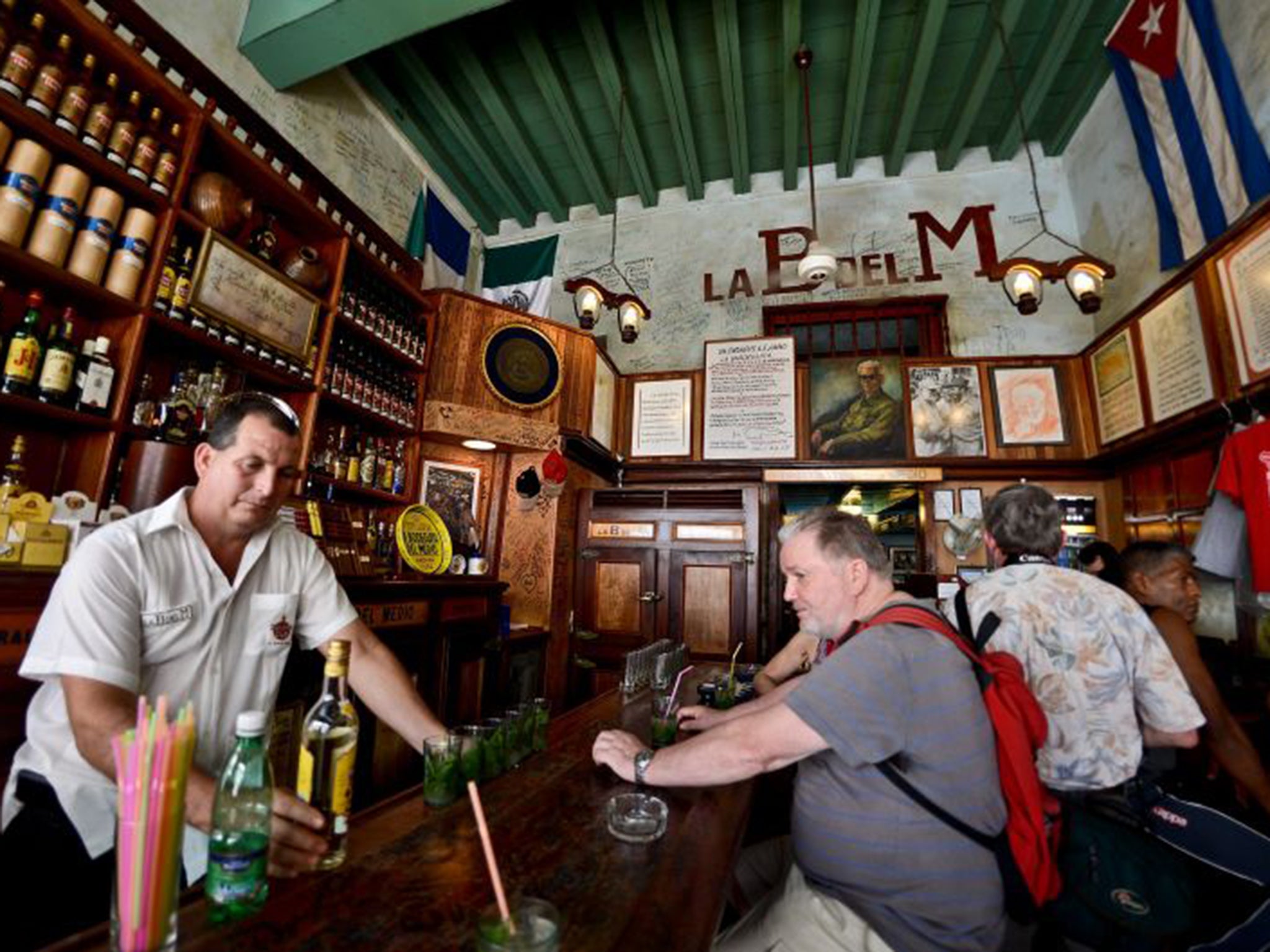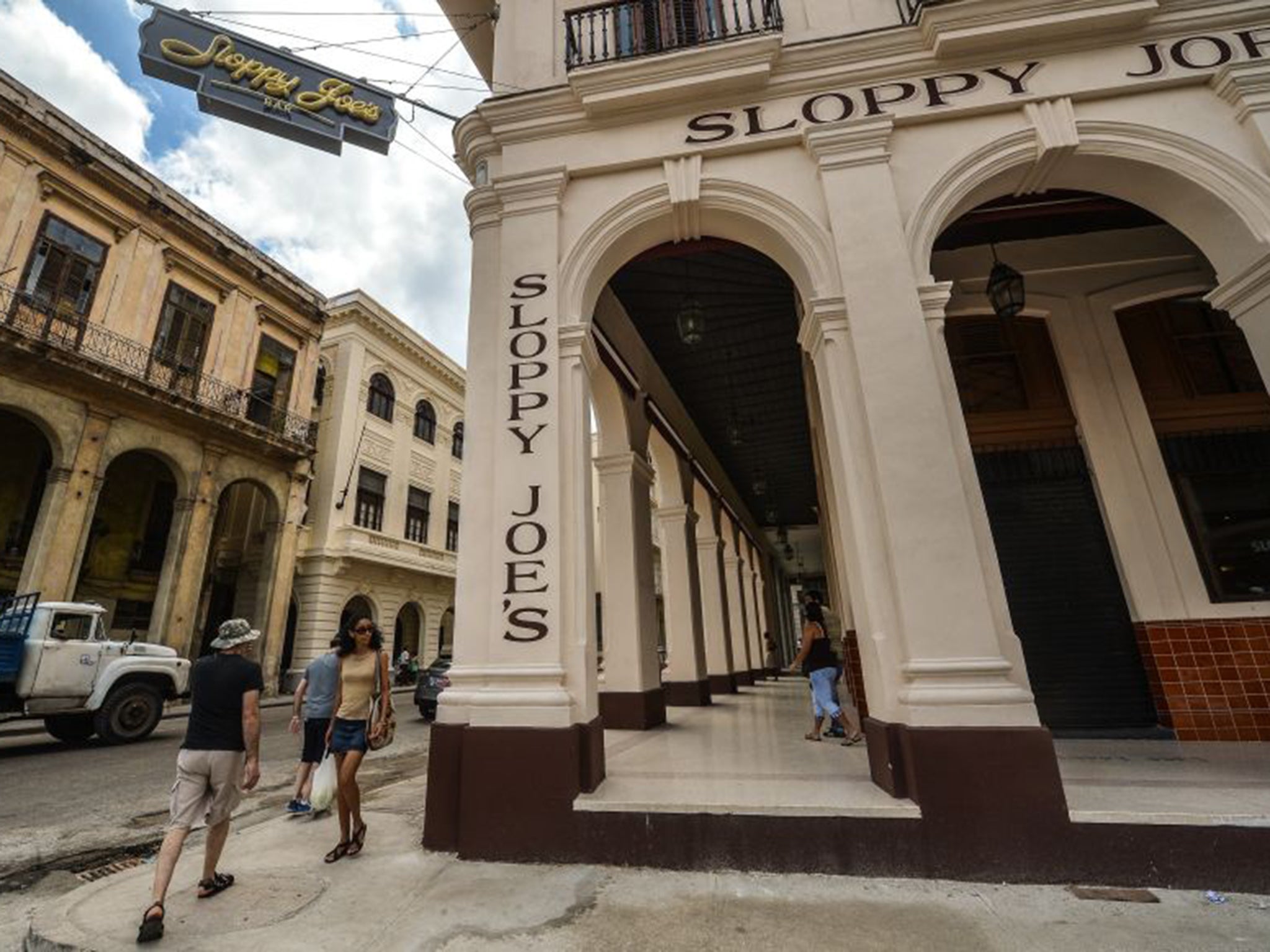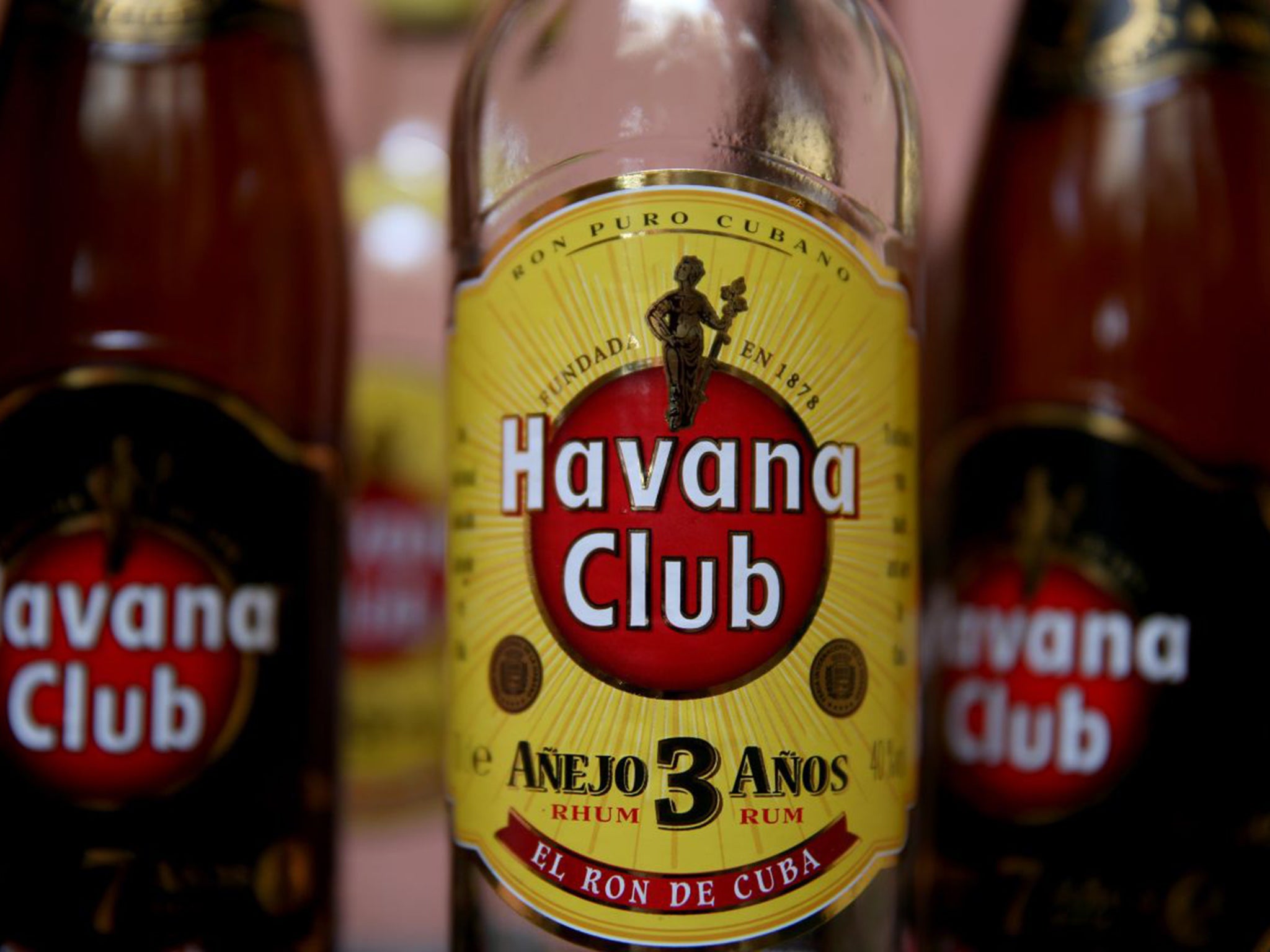US-Cuba relations: What stronger ties between the two nations mean for the rum industry
The Bacardi family may leave its Puerto Rican exile and return to its roots

Your support helps us to tell the story
From reproductive rights to climate change to Big Tech, The Independent is on the ground when the story is developing. Whether it's investigating the financials of Elon Musk's pro-Trump PAC or producing our latest documentary, 'The A Word', which shines a light on the American women fighting for reproductive rights, we know how important it is to parse out the facts from the messaging.
At such a critical moment in US history, we need reporters on the ground. Your donation allows us to keep sending journalists to speak to both sides of the story.
The Independent is trusted by Americans across the entire political spectrum. And unlike many other quality news outlets, we choose not to lock Americans out of our reporting and analysis with paywalls. We believe quality journalism should be available to everyone, paid for by those who can afford it.
Your support makes all the difference.Call it a liquor legend. As revolution engulfed Cuba at the end of the 1950s, the coconut tree that Facundo Bacardi had planted at his distillery in Santiago de Cuba in 1862, as a symbol of company prosperity, began to wither and die. Months later, Fidel Castro would seize the property and the Bacadi family would flee the island.
“El Coco”, as it was called, is nowadays merely a fake to be found inside the Bacardi museum at what is now the company’s main factory just outside San Juan, Puerto Rico, where most of its famous rum has been produced since it left Cuba. The museum is a paean to Bacardi’s Cuban roots. Even the labels on its premium bottles pay homage to the old Santiago days, with the words “Distilled in Puerto Rico” barely visible.
Close to the tree stands a copper still, rescued from the original Santiago de Cuba distillery, with the sounds of dripping and gurgling supplied by hidden loudspeakers. It’s all designed to whet our appetites for the free sample of eight-year-old Bacardi that awaits us in plastic cups near the reconstruction of the original Bacardi bar in pre-revolution Havana. Among Bacardi’s best customers then was Ernest Hemingway, a longtime Cuba denizen, who mentioned its rum in two of his novels.

Now, after 53 years in exile, the still family-owned Bacardi is suddenly being forced to ponder the obvious dilemma: now that the United States is talking to the regime of Fidel’s brother, Raul Castro, about an eventual end to its embargo of the island, is it perhaps time to return and plant a new El Coco in Cuba?
It could happen, at least if the guide on a tour through the Bacardi museum has any insight into management’s thinking. “They are very happy with what is happening to the Cuban people,” she ventured, before ostensibly breaking real news: “It is still too early to know, but they would love to have their headquarters in Cuba.” She may have been jumping the gun. Or maybe not. The stakes have to do more with cut-throat business rivalry than sentimentality.
The opening up of Cuba threatens to reignite a long-running and bitter feud between Bacardi and the French beverage giant Pernod Ricard. Last week it revealed that it has plans to begin exporting its Havana Club rum, produced in a joint partnership with the Cuban government in Cardenas, to the US as soon as it can.
In recent years, Bacardi, which over time has grown into a $5bn (£3.2bn) corporation that also owns Grey Goose vodka, Bombay Sapphire gin, Dewar’s and Martin Rossi, fought a protracted legal battle with Pernod over selling Havana Club in the US. The dispute drew in the World Trade Organisation, the European Commission and even the US Congress. Bacardi eventually prevailed and has sold Havana Club in the US since 2012. Thus, what Pernod sells as Havana Club in Europe must be labelled with a new name if it is to be sold in the US. The company has opted for “Havanista”.
Yet, Bacardi now has a new problem. Nary a drop of genuine Cuban rum has been poured in the US for more than five decades, at least not legally. Until now. In December, Barack Obama, as part of a first round of easing trade restrictions, declared that Americans travelling to Cuba under various dispensations could bring back cigars and alcohol up to a total value of $100. And when the embargo goes, Cuban rum could start to flow in torrents.
While Bacardi, for the moment, can offer only rum made in Puerto Rico, Pernod is gearing up to play its Cuban edge. “If the embargo is lifted, we could gain access to an enormous market and a substantial growth booster for the coming years,” Jérôme Cottin-Bizonne, chief executive of Pernod Ricard’s Havana Club, told Reuters in Cuba last week. Thus the gauntlet was again thrown down.

Watching nervously is Puerto Rico. Already under strain from a brutal economic recession that has barely let up in eight years, the government is fearful of the further effects that the opening up of Cuba could have on its economy, especially on tourism. And losing Bacardi, whose bat logo adorns bars from one end of the island to the other, would be a body blow.
The island’s best hope is that Bacardi will at least take its time before setting even one foot back in its ancestral land. “I think they’ll wait until the Castros die before they do that,” said Sergio Marxuach, policy director of the Centre of a New Economy, a think-tank in San Juan and a friend of Joaquin Bacardi, one of the surviving family directors. “There is no love lost there.” For its part, Bacardi is weighing its words on the subject with consummate care, unlike, perhaps, the tour guide at the museum.
“Regarding the current Cuban front, it’s too early and would be highly speculative to comment on the embargo, sales, return and/or any actions relating to Cuba,” a company spokeswoman, Amy Federman, carefully told The Independent on Sunday, before offering a more formal company statement: “Bacardi is proud of its Cuban roots. We have the utmost respect and sympathy for the Cuban people with whom we share a common heritage. Regarding the diplomatic actions, we will need to wait and see what the impacts are ... In the meantime, we continue to support the restoration of fundamental human rights in Cuba.”

Even the name of the world’s most popular rum cocktail, the Cuba Libre (rum and Coca-Cola), would seem to beg Bacardi to return to Cuba. Yet, there is one headwind that Pernod may face trying to ply Havanista in the US. The still powerful anti-Castro forces in Miami will surely mobilise to impede its prospects by reminding the public of the French company’s long history, dating back to 1994, of working jointly with the Castro regime on the island, long before the current thaw began.
If it is only the headquarters that Bacardi wants to relocate on the island, it would first be a loss for Bermuda, which is currently where the company has its corporate base. But if it goes further, it could encompass the distillery in Catano, directly across the harbour from the famous Spanish fort in Old San Juan, was inaugurated in Puerto Rico by Bacardi in 1936, long before its flight from Cuba. Later christened the “Cathedral of Rum” because of the soaring, Art Deco-style edifice of its main building, it is the biggest rum distillery in the world. Its total abandonment would be a wrench not just for Puerto Rico, but also for the company.
There are several real palms just in front of its Catano cathedral, by the way. They seem to be thriving.
Subscribe to Independent Premium to bookmark this article
Want to bookmark your favourite articles and stories to read or reference later? Start your Independent Premium subscription today.
Join our commenting forum
Join thought-provoking conversations, follow other Independent readers and see their replies
Comments